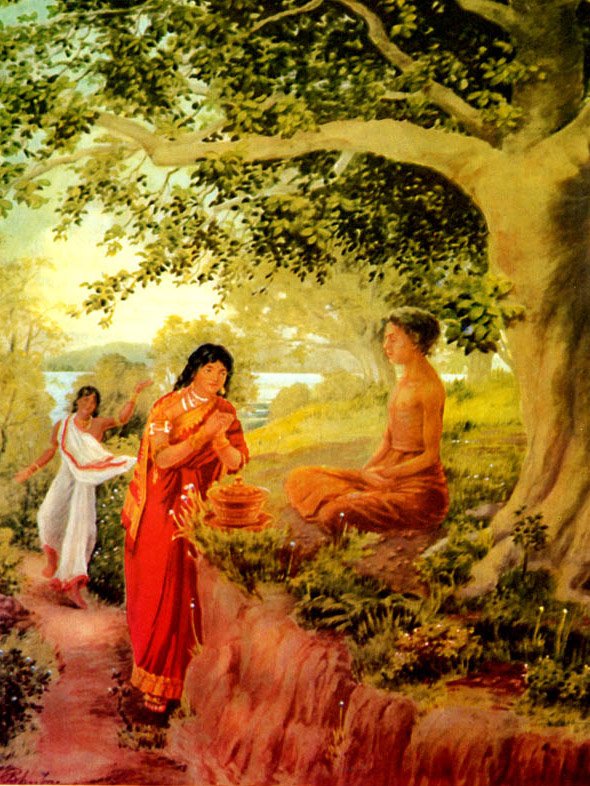Apadana commentary (Atthakatha)
by U Lu Pe Win | 216,848 words
This is the English translation of the commentary on the Apadana (Atthakatha), also known as the Visuddhajana-Vilasini. The Buddhist stories known as apadanas refer to biographies of Buddhas, Buddhist monks and nuns. They are found in the Pali Canon (Khuddaka Nikaya), which is the primary canon of Theravada Buddhism. Alternative titles: Visuddhaja...
Commentary on Biography of the thera Kapparukkhiya
Stanzas starting with Siddhatthassa bhagavato constitute the biography of the venerable thera kapparukkhiya. This one also having done devoted service toward former (or previous) Buddhas, accumulating meritorious deeds conducive towards escape from rounds of repeated rebirths, in this and that existence, was reborn in a family endowed with wealth at the time of the Glorious One Siddhattha; he was highly wealthy and abundantly prosperous, had clear faith in the Master, owned a world-tree (Kapparukkha) of gold made variegated with seven kinds of gems, placed it facing the shrine of the Glorious One Siddhattha as reverential offering to the shrine. Having done meritorious deed in this self-same form, he stood as long as his span of life lasted, passed away thence, wandered about his rounds of rebirths, in due course, was reborn in a family house when this Buddha arose;when he attained the age of intelligence he had his household living well-established and having clear-faith in the three gems, listened to the truth (dhamma), properly gained pious faith, won over the heart of the Master, became a monk, attained arahatship not long afterwards even, and became well known as the thera kapparukkhiya by the name of the meritorious-deed done formerly.
108. Having thus attained the fruition of arahatship, he remembered his own former deed and uttered a stanza, starting with Siddhatthassa Bhagavato in order to make manifest his deed done formerly by way of becoming delighted. Thūpaseṭṭhassa sammukhā (facing the best solid shrine), at the place in front of the shrine, the solid relic-repository shrine which as best and most excellent; vicitta dusse (variegated cloth), such pieces of cloth as Chinese sheeting, Somāra sheeting, and so on, with many a colour, without equal, without similarity, which won the heart by means of mind; lagetvā (having hung) hanging down the world tree, (kappsarukkha); ṭhapesim (I placed); I had established;thus, is the meaning; the rest is but clear in meaning.
The commentary on the biography of the thera Kapparukkhiya has ended.
The commentary on the fourth chapter (vagga) has ended.
